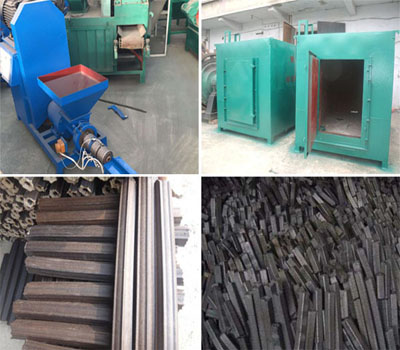The process of charcoal production with biomass briquette machine
The whole process of making charcoal with biomass briquette machine is closely related to heat, and the calorific value can be measured accurately through high temperature measuring instrument. The following is the process of making charcoal with biomass briquette machine.

1. Drying of raw materials:
In order to ensure the quality of charcoal, it is necessary to make good briquettes. Apart from the equipment and process, the good quality of briquette is also determined by the amount of water contained in the raw material. The moisture content of raw materials is usually less than 10%. Therefore, the first step is to dry the raw material. The raw material with higher moisture content can be dried in the open air for 1 ~ 2 days first to make its surface moisture evaporated, which can reduce the time and fuel consumption of thermal drying. Then, granularity qualified raw material would be put into the hot air dryer for drying until the moisture content is less than 10%. The drying temperature is 140℃ ~ 300℃ or so commonly.
2. Making briquettes:
The briquettes are made by biomass briquette machine. There is the heating ring outside of the forming sleeve of biomass briquette machine. It can make the temperature of the forming sleeve rise to about 350℃. In order to ensure that the smooth surface, large dense and no crack of straw briquettes, we can choose the appropriate forming temperature according to the type and moisture content of raw materials. It is determined by field experiment.
Generally speaking, we assume that the propeller is qualified, and the moisture content of raw material is between 6 ~ 10%, the drying temperature is generally between 140℃ ~ 500℃, and varies according to the shape of the material and model of the heater. Material temperature can be controlled by adjusting the length of the drying tube and air distribution, generally not more than 55℃ ~ 70℃.
3. Carbonizing (charcoal burning)
The carbonizing process of medium and low temperature charcoal. The drying stage is from the beginning of the ignition until the temperature rises to 160℃, then the water contained in the briquettes is evaporated mainly rely on external heat and the heat generated by the burning of themselves. The chemical composition of straw briquettes is almost unchanged.

